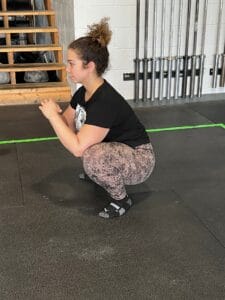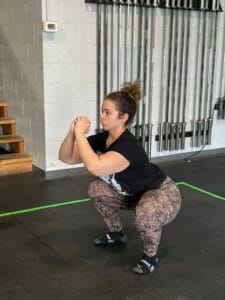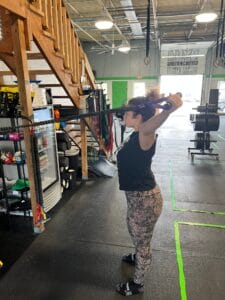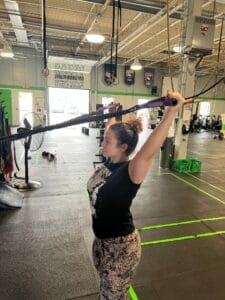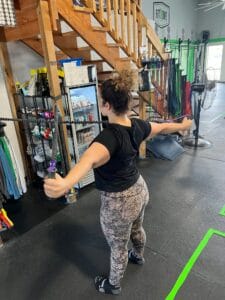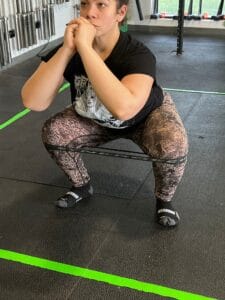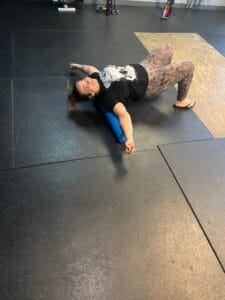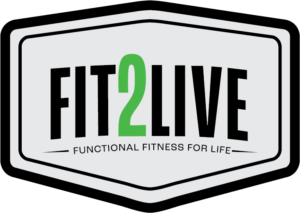What Is Hypermobility?
You just finished a tough workout and now it’s time to cool down. The Coach gives everyone a band to help with mobilizations, but you can already pull your leg almost to your chest. We then do a straddle stretch pose, but you can already place your chest on the ground and take a nap. Shoulders stretches? What’s the point? I guess I’ll just lay here until class is over.
For many members that have hypermobility this is very common. People with hypermobile joints still experience muscle stiffness, pain, and injuries, but common mobility drills and exercises do not help them with treating these issues or improving their performance. hypermobility in CrossFit is a double edged sword. While they can easily get into good positions with great range of motion, they have to be mindful not to lose muscle engagement because that will put more strain on the joint that it can not control. Injuries that occur for hypermobile people can be improved but it requires a different approach than their stiffer counterparts.
All About Control
Hypermobility is defined as having abnormal or excessive range of motion at a joint or multiple joints. Hypermobility can occur for two reasons. It can be genetic. Some people are just born with more bendy, loose connective tissues in their joints. Other people develope hypermobility through specific training while they were developing as children. People who grew up performing in dance, gymnastics, martial arts, swimming, etc. develop hypermobility through constantly being pushed into extreme ranges of motion as their body was still developing. While hypermobility is not dangerous by itself, it can lead to injuries due to poor stability and motor control. People with hypermobility have to be very mindful of how their body is moving, they have to be aware of the right position, and they have to focus on muscle engagement.
Passive Hypermobility (bad) vs Active Hypermobility (good)
Strength and Stability
For hypermobile people it is imperative to do strength and stability training to avoid injury. It is important to not only strengthen the tissues that support your joints, but also so that you learn WHAT CONTROL FEELS LIKE. You have to be aware of what it feels like to have the correct muscles engaged and the correct sequence of muscle engagement, it should feel more difficult than what you’re used to because more muscles are engaging. It requires more mindfulness than someone with stiff joints, but that is your trade off for your amazing range of motion.
Passive Hypermobility (bad) vs Active Hypermobility (good)
Banded exercises like the Crossover Symmetry, Mini-Band glute drills, and Band Pull Apart are a great way to not only strengthen our muscles and joints, but also to learn how to resist tension and build stability in the joints.
Tempo and Pause movements are also a great tool to improve muscular control and coordination. These movements slow you down and help to feel your muscles engage and stay engaged at the correct time.
Rollout over Passive stretching
For joints that are hypermobile it is best to avoid stretching these joints past their limit (end range of motion). This means avoiding stretching for long periods of time. You already have enough range of motion, you don’t need to push it further. Instead, focus on myofascial release (rolling out) and trigger point therapy. While your JOINTS may be loose your MUSCLES are still tight from all the work we do. Focus on working out those tight muscle knots and creating more active mobility instead of stretching and pulling the joints, this will improve muscle health without adding fuel to the hypermobility fire.
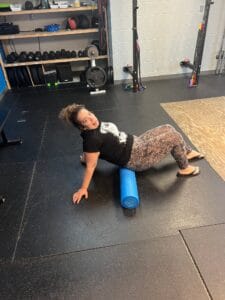
For specific drills to improve areas where your hypermobility is affecting your health and performance join us for the upcoming Injury Prevention Workshop on Saturday, August 6th from 11:30am-1pm. Get homework and feedback to improve your individual issues and avoid future injury imbalances.
INJURY PREVENTION WORKSHOP REGISTISTRATION HERE.
Stay tuned for our next article on the opposite of hypermobility……IMMBOLITY or HYPOmobility.
Looking for 1-on-1 attention? Schedule a PT session with me, just email Brandon@fit2livegym.com to start working on your specific goals.


